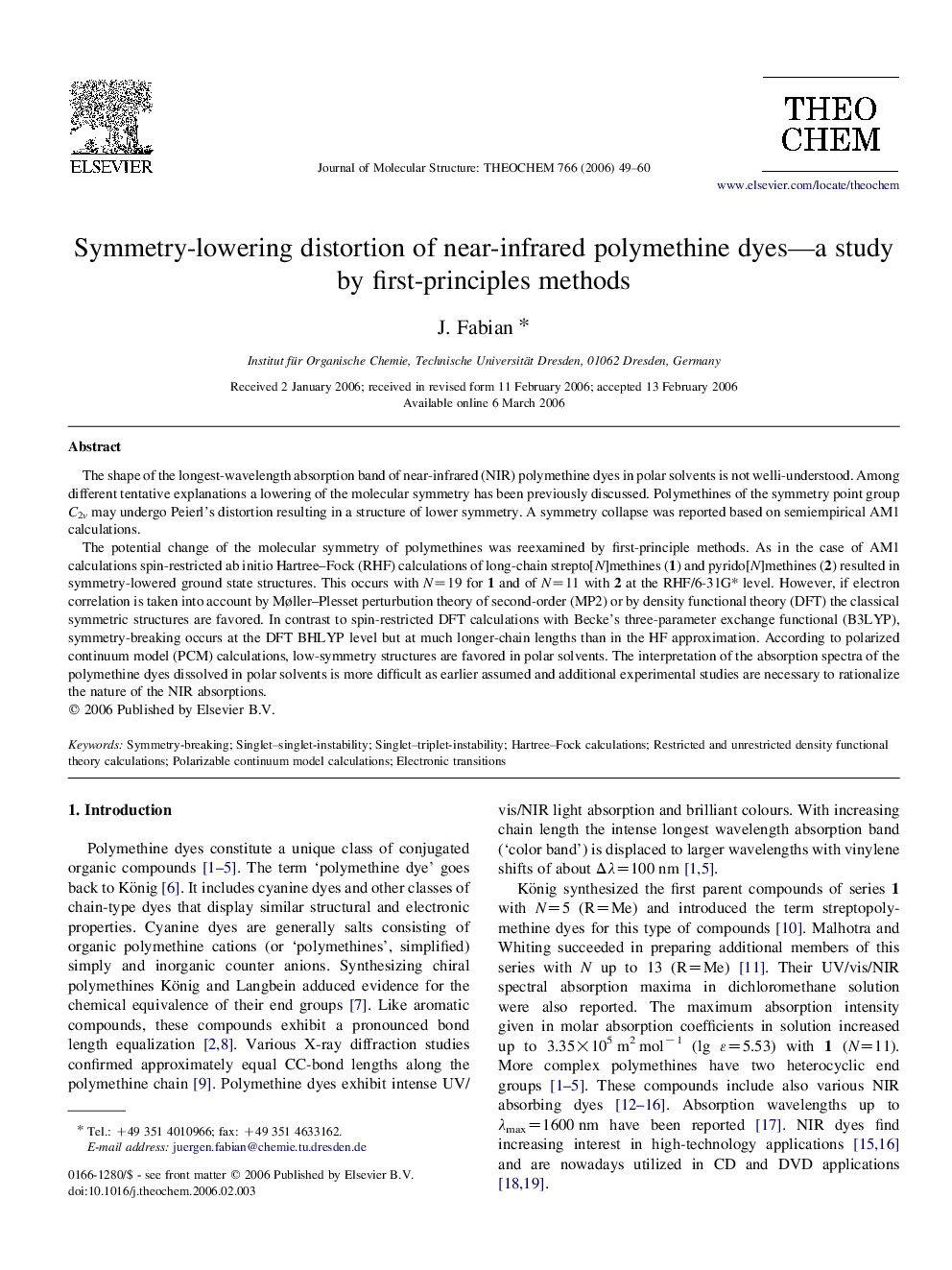| Article ID | Journal | Published Year | Pages | File Type |
|---|---|---|---|---|
| 5419431 | Journal of Molecular Structure: THEOCHEM | 2006 | 12 Pages |
Abstract
The potential change of the molecular symmetry of polymethines was reexamined by first-principle methods. As in the case of AM1 calculations spin-restricted ab initio Hartree-Fock (RHF) calculations of long-chain strepto[N]methines (1) and pyrido[N]methines (2) resulted in symmetry-lowered ground state structures. This occurs with N=19 for 1 and of N=11 with 2 at the RHF/6-31G* level. However, if electron correlation is taken into account by Møller-Plesset perturbution theory of second-order (MP2) or by density functional theory (DFT) the classical symmetric structures are favored. In contrast to spin-restricted DFT calculations with Becke's three-parameter exchange functional (B3LYP), symmetry-breaking occurs at the DFT BHLYP level but at much longer-chain lengths than in the HF approximation. According to polarized continuum model (PCM) calculations, low-symmetry structures are favored in polar solvents. The interpretation of the absorption spectra of the polymethine dyes dissolved in polar solvents is more difficult as earlier assumed and additional experimental studies are necessary to rationalize the nature of the NIR absorptions.
Related Topics
Physical Sciences and Engineering
Chemistry
Physical and Theoretical Chemistry
Authors
J. Fabian,
